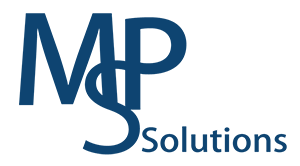Accounting and finance management is a crucial part of any business. Hence a versatile system is needed to control and manage the accounts and finances of the company. SAP Business One is a comprehensive ERP solution that is equipped with features to manage each and every aspect of your business. In its accounting module, it provides a host of tools to make the process of accounts and finance management easy and effective. SAP Business One accounting software provides features such as automatic journal entries, chart of accounts templates, payments management, budget management, financial reporting, etc. which covers almost all the facets of accounting and finance
The major features of SAP Business One’s accounting module are partitioned into four major sections. These are explained below –
1. Accounting – The accounting part of SAP Business One consists of features that pertain to accounting transactions. You can create customized charts of accounts from the available templates. SAP B1 can automatically create journal entries for all business transactions related to purchasing, sales, and inventory. It can also calculate taxes such as VAT and sales tax automatically for each transaction. It helps in managing redundant tasks by letting users create templates for recurring transactions and then use them periodically. Users also have the option to include multiple currencies for accounts payable and receivable.
2. Banking – This set of features allows for payment management and balance sheet reconciliation. Users can automate incoming or outgoing payments and also execute the transactions in batch mode for faster processing. All payment methods such as cheque, bank transfer, cash, and credit are supported. After every payment or invoice processing, automatic journal entries are created which helps in keeping the balance sheet correct and up to date. SAP B1 also runs an account reconciliation service in the background through which each payment or invoice that is initiated is also posted in the general ledger.
3. Controlling – Controlling includes features for managing cash flows, tracking budgets, and allocating funds. Users can set workflow-based alerts through which any pending payments or unpaid invoices are tracked and analyzed for their effect on the cash flow state of the business. SAP B1 allows for creating budgets in any currency and with any user-specified rules. It then monitors the expenses and provides alerts on those transactions which exceed the allowed limit. It also provides functionality to manage the expenses of each department of your business by setting up distribution rules to automatically allocate revenue or block their spending.
4. Financial reporting – This module provides easy access to all the different types of financial reports. Users can view or download a whole range of reports such as balance sheets, cash flow analysis, sales and purchasing reports, budget reports, profit and loss statements, multi-period comparisons, transactions reports, etc.
The benefits of SAP B1 accounting and finance module are many. It streamlines all the accounting processes, manages the costs and budgets effectively, reconciles balance sheets, predicts cash-flow status, creates detailed reports, and a lot of other features. It is a comprehensive and powerful solution that is capable enough to handle all the accounting and finance management processes of a business.


Recent Comments